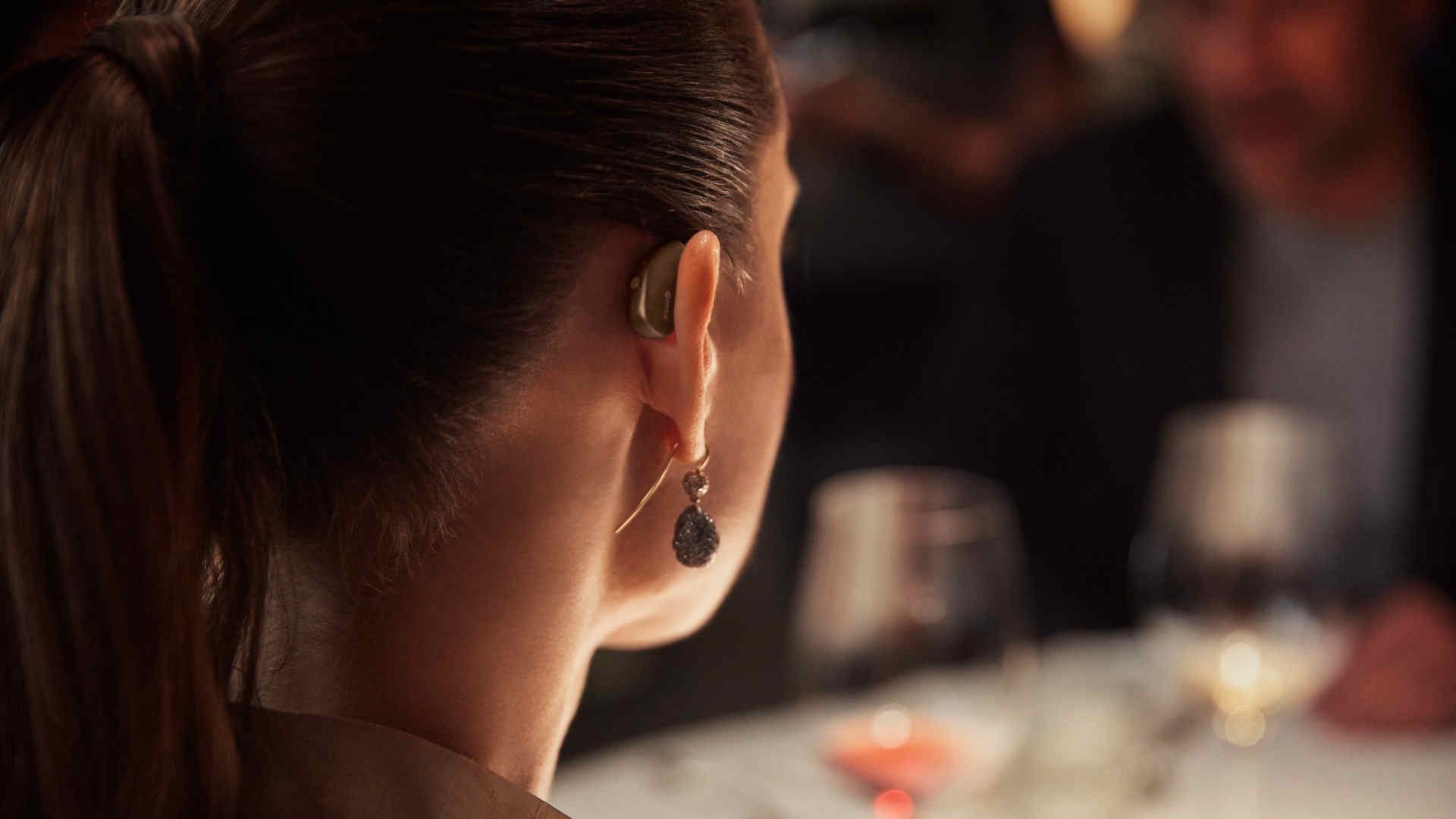
How will hearing aids fit in my ear?
Hearing aids come in many shapes and sizes – and so do the ears of those who wear them. So how do hearing professionals make sure that your hearing aids fit your ears? It’s a combination of two things: comfort and sound.
Created Updated
Hearing aids
THE PHYSICAL FIT
There are many ways to fit a hearing aid. In general a hearing professional will follow four main steps:
1. Study the audiogram
Which type of hearing aid is right for you? After your initial hearing test, your hearing professional will first look at your type and level of hearing loss. Some hearing aids are not appropriate for certain types of hearing loss.
2. Consider your needs
Make sure to tell your hearing professional about any special needs you have concerning hearing aids. Do your hands shake or do you have arthritis? – making it difficult to handle small batteries? Which color hearing aids would you like? Choose one that matches your hair or skin color for a more discreet look – or brighter colors if you see your hearing aids as fashion accessories.
3. Measure your ears
An earwire is a small wire that connects the ear tip in your ear to the hearing aid behind your ear. The length of an earwire for behind-the-ear hearing aids depends on the size of your ear. Your hearing professional will use a small tool to measure how long your wire will need to be.
4. Choose an earmold
After your type of hearing aid and wire are chosen you will be fit for an earmold. Earmolds are plastic pieces that secure the hearing aids speaker in the ear. There are two types of earmolds – instant domes that are made of a soft silicone, and custom earmolds that are made of hard or soft material. If custom earmolds are right for you, your hearing professional will make an impression of your outer ear using a quick-dry silicone substance. This impression will be used as a basis for your earmolds to make sure they fit precisely your ears.
TIP! Ask your hearing professional to take a picture of one of your ears after your hearing professional has put your hearing aids on. This way you will know how to position them correctly when you get home.
FITTING SOUND
Once your hearing aid fits comfortably in your ear, it is time to program it to create the perfect sound environment. To do so, the hearing professional will typically follow these steps:
3. Program your hearing aid
Your hearing professional will use special fitting software to see how your hearing aids work with your type of hearing loss. This software will also measure the acoustics of your ear and how hearing aids react to that. This makes for a more precise fit.
2. The hearing test
You will then get another hearing test – this time with your hearing aids on. This will help to measure the differences in how you can hear with hearing aids vs. without them.
3. The final touches
After you and your hearing professional have determined the best fit and sound, you will be able to make smaller adjustments based on real-life listening situations. You can return to your hearing professional if you feel that your hearing aids need adjustments after a few days of use.
The perfect fit with WIDEX EASYWEAR
First-time hearing aid users may find that their voice sounds strange when they first put their hearing aids on. Getting used to hearing aids does take some time.
There are two other issues that Widex has been working to fix when it comes to how hearing aids fit in the user’s ear. We recently found a solution to these with WIDEX EASYWEAR:
Lateral migration – Older hearing aid models may feel like they are going to fall out of your ears when you move around a lot – a problem that is technically called “lateral migration”. We have worked to fix this problem with EASYWEAR, a feature of Widex hearing aids that helps your hearing aids to better stay in your ears.
Itching – Lateral migration can also cause a feeling of itching in your ears due to the friction caused by moving ear molds. EASYWEAR can also help this by minimizing friction and keeping hearing aids firmly in place.
The patent-pending design of WIDEX EASYWEAR allows for a better physical fit, more stability in the ear canal, and a more discreet look.
EASYWEAR compared to standard hearing aid fittings:

Benefits of EASYWEAR include:
- Smaller and more discreet - better to wear, invisible
- Cosmetically appealing - more satisfied users
- Ergonomic and comfortable - better to wear, can’t be felt
- Safe - doesn’t fall out, stays in the ear
- Same performance level - no compromise in sound
The adjustment phase
It takes some time to adjust to hearing aids, especially if you are a first-time user. During the first couple of days, the sound reproduced by the hearing aids may seem a bit overwhelming, and it may be difficult to recognize and distinguish between various sounds. But as you use your hearing aids every day, you will gradually get used to the new sounds.
Here are some tips to ease the transition:
- Start slow: Wear your hearing aids for one or two hours at a time.
- Keep it quiet: In the beginning, use the hearing aids in situations with few people and little noise.
- Go gradual: Start gradually using the hearing aids for longer periods of time and in noisier environments.
- Relax: Allow yourself a couple of breaks during the day.
- Avoid pain: If your ears get sore, contact your hearing care specialist. He or she can help you find the reason.